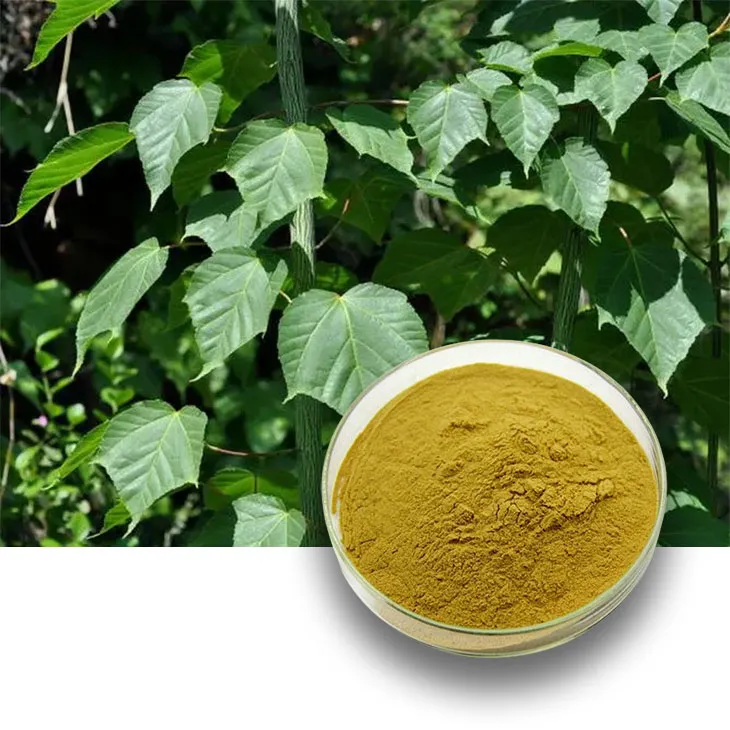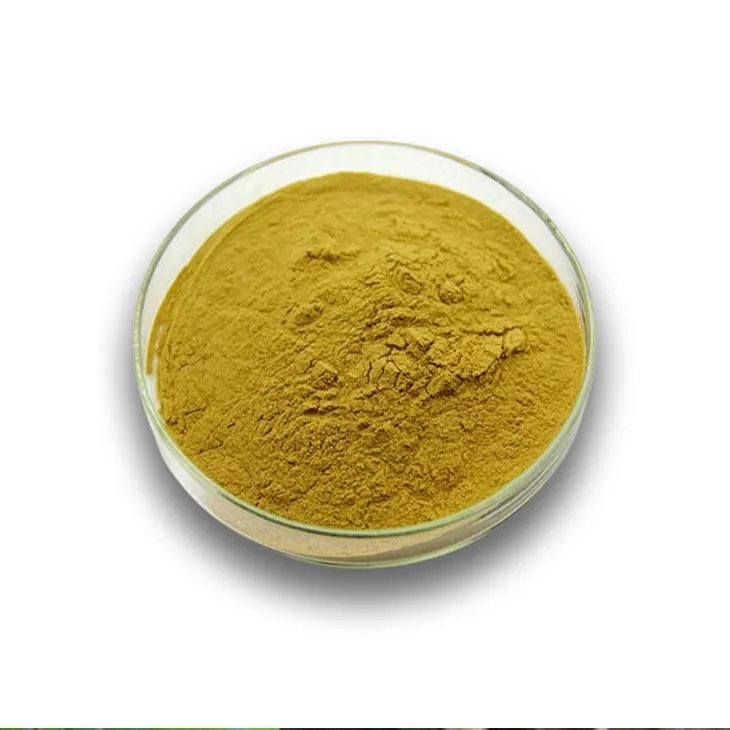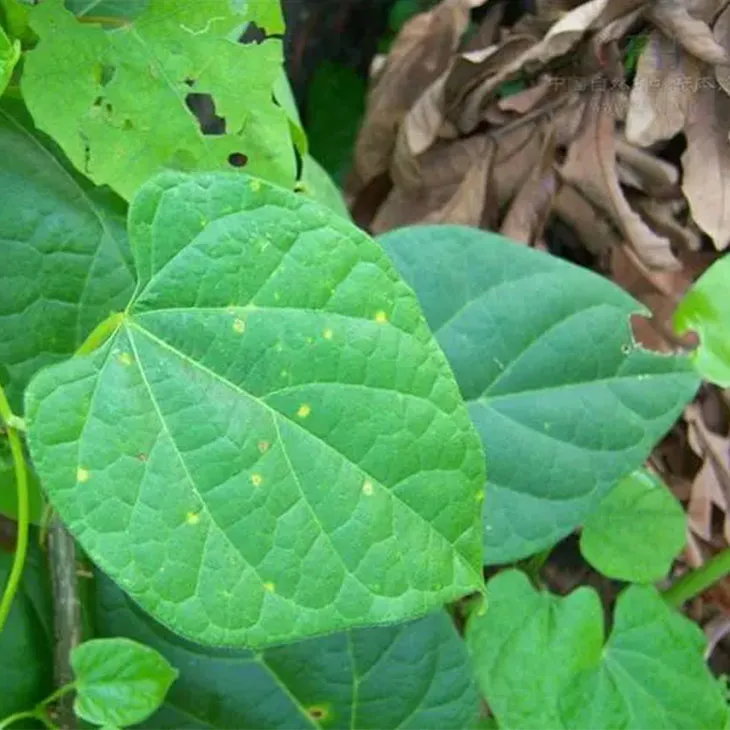- 0086-571-85302990
- sales@greenskybio.com
How to make powder from Tinospora cordifolia extract?
2024-11-30

1. Introduction
Tinospora cordifolia, a plant with various medicinal properties, has been used in traditional medicine for a long time. Extracts from this plant are valuable, and converting these extracts into powder form can enhance their usability in different applications such as in pharmaceutical formulations, dietary supplements, and herbal remedies. However, the process of making powder from Tinospora cordifolia extract is a multi - step and complex procedure that requires careful attention to detail.

2. Quality of the Extract
2.1. Extraction Methods
There are several methods for extracting Tinospora cordifolia, and the choice of method significantly affects the quality of the final powder.- Solvent Extraction: This is a common method. Different solvents such as ethanol, methanol, or water can be used. For example, ethanol extraction may be preferred when targeting certain active compounds. Ethanol can dissolve a wide range of phytochemicals present in Tinospora cordifolia. However, the concentration of ethanol needs to be carefully controlled. A higher concentration may extract more non - target compounds, while a lower concentration may not be efficient in extracting the desired active components.
- Supercritical Fluid Extraction: This method uses supercritical fluids, such as carbon dioxide. It has the advantage of being a relatively clean process, as there is no solvent residue left in the extract. Supercritical fluid extraction can also be more selective in extracting specific compounds. However, it requires specialized equipment and is more expensive compared to solvent extraction.
2.2. Source of the Plant
The quality of the Tinospora cordifolia plant itself also affects the extract quality.- Geographical Origin: Plants from different regions may have different chemical compositions. For instance, plants grown in areas with specific soil conditions or climates may contain higher levels of certain active compounds. It is important to source the plant from regions known for producing high - quality Tinospora cordifolia.
- Harvesting Time: The time of harvesting can impact the content of active ingredients. Harvesting at the right stage of the plant's growth cycle ensures maximum concentration of the desired compounds. For example, harvesting too early may result in lower levels of bioactive substances.

3. Drying the Extract
3.1. Importance of Drying
Drying is a crucial step in the process of making powder from Tinospora cordifolia extract. It helps in removing the moisture content, which is essential for the long - term stability of the powder. If the extract is not dried properly, it can lead to spoilage, microbial growth, and a decrease in the quality of the final powder product.3.2. Drying Methods
There are different drying methods available, each with its own advantages and disadvantages.- Air Drying: This is a simple and cost - effective method. The extract is spread out in a well - ventilated area and allowed to dry naturally. However, it is a slow process and may not be suitable for large - scale production. Also, there is a risk of contamination during the long drying period.
- Oven Drying: Using an oven allows for more controlled drying. Different temperatures can be set depending on the nature of the extract. For example, a relatively low temperature may be required to preserve the integrity of heat - sensitive compounds. However, over - drying can occur if the temperature is too high or the drying time is too long, which can affect the quality of the extract powder.
- Freeze Drying: This method is considered to be one of the best for preserving the quality of the extract. In freeze - drying, the extract is first frozen and then the water is removed by sublimation. It helps in retaining the biological activity of the compounds present in the extract. However, freeze - drying equipment is expensive and the process is time - consuming.
3.3. Optimizing Drying Temperature
Optimizing the drying temperature is crucial. Different compounds in the Tinospora cordifolia extract may have different thermal stabilities.- For heat - sensitive compounds like some alkaloids, a lower drying temperature, typically between 30 - 40°C, may be optimal. Higher temperatures can cause degradation of these compounds, leading to a loss of their medicinal properties.
- On the other hand, some other non - heat - sensitive components may tolerate higher temperatures. However, it is still necessary to find a balance to ensure overall quality of the extract powder. Experiments can be carried out to determine the ideal drying temperature range for a particular extract.

4. Milling the Dried Extract
4.1. Purpose of Milling
Milling is the process of reducing the dried extract into a powder form. This is important as it increases the surface area of the extract, which can enhance its solubility, bioavailability, and ease of formulation in different products.4.2. Milling Equipment
There are various types of milling equipment available.- Mortar and Pestle: This is a traditional and simple method, suitable for small - scale production or laboratory use. It allows for manual control of the grinding process, but it is time - consuming and may not produce a very fine powder.
- Ball Mills: Ball mills are more suitable for larger - scale production. They use balls to grind the dried extract. The speed of rotation, the size and number of balls, and the milling time can be adjusted to achieve the desired powder fineness.
- Hammer Mills: Hammer mills are another option. They use hammers to break down the dried extract. They are relatively fast but may not be as precise in controlling the powder fineness as ball mills.
4.3. Adjusting Powder Fineness
The fineness of the powder can be adjusted according to different application requirements.- For use in capsules or tablets, a relatively fine powder may be required to ensure proper compaction and dissolution. A powder with a particle size of around 100 - 200 micrometers may be suitable.
- If the powder is to be used in a topical application, a coarser powder may be acceptable. In this case, the particle size could be in the range of 500 - 1000 micrometers.

5. Packaging of the Powder
5.1. Importance of Packaging
Proper packaging of the Tinospora cordifolia extract powder is essential to maintain its stability and quality. Packaging protects the powder from environmental factors such as moisture, air, and light, which can cause degradation of the active compounds.5.2. Packaging Materials
There are different packaging materials to choose from.- Plastic Packaging: Plastic bags or containers are commonly used. They are lightweight, inexpensive, and can provide a certain level of protection. However, some plastics may be permeable to moisture and air over time.
- Glass Packaging: Glass bottles or jars are more suitable for long - term storage. They are impermeable to air and moisture, and do not react with the powder. However, they are heavier and more fragile than plastic packaging.
- Aluminum Foil Packaging: Aluminum foil can provide excellent protection against light, air, and moisture. It is often used for packaging products that are sensitive to these factors. However, it is relatively expensive and may require additional protection against punctures.
5.3. Labeling
Labeling of the packaging is also important. The label should include information such as the name of the product (Tinospora cordifolia extract powder), the batch number, the date of production, the expiry date, the recommended storage conditions, and any warnings or precautions.6. Quality Control
6.1. Physical and Chemical Tests
Quality control measures are necessary to ensure the quality of the Tinospora cordifolia extract powder. Physical and chemical tests can be carried out.- Particle Size Analysis: This helps in determining if the powder fineness meets the required standards. It can be done using techniques such as laser diffraction or sieve analysis.
- Moisture Content Analysis: Measuring the moisture content is crucial as excessive moisture can lead to spoilage. Karl Fischer titration or loss - on - drying methods can be used to determine the moisture content.
- Chemical Composition Analysis: Analyzing the chemical composition of the powder ensures that the desired active compounds are present in the correct amounts. Techniques such as high - performance liquid chromatography (HPLC) or gas chromatography - mass spectrometry (GC - MS) can be used for this purpose.
6.2. Microbiological Tests
Microbiological tests are also essential to ensure the safety of the powder.- Total Plate Count: This determines the number of viable microorganisms present in the powder. A high count may indicate poor manufacturing practices or contamination.
- Yeast and Mold Count: Yeast and mold can grow on the powder if the storage conditions are not proper. Monitoring their count helps in ensuring the quality of the product.
- Pathogen Testing: Testing for specific pathogens such as Salmonella, Escherichia coli, etc. is necessary to ensure the safety of the powder for human consumption or use.
7. Conclusion
Making powder from Tinospora cordifolia extract is a complex process that involves multiple steps, from extraction to drying, milling, packaging, and quality control. Each step is crucial in determining the quality, stability, and usability of the final powder product. By carefully controlling each step, it is possible to produce a high - quality Tinospora cordifolia extract powder that can be used in various applications in the fields of medicine, nutrition, and herbal products.
FAQ:
Q1: What are the key factors in the extraction process for Tinospora cordifolia to ensure a high - quality extract?
The key factors include using proper solvents, maintaining appropriate extraction time, and choosing the right extraction method such as maceration or Soxhlet extraction. Also, the quality of the raw Tinospora cordifolia material should be high, free from contaminants and of the right species variety.
Q2: How can one optimize the drying temperature during the process of making powder from Tinospora cordifolia extract?
One can conduct small - scale drying tests first. Analyze the physical and chemical properties of the extract powder obtained at different temperatures. Consider factors like the preservation of active ingredients, powder solubility, and stability. Usually, lower temperatures may be better for heat - sensitive components, but it may also require longer drying times.
Q3: What are the typical application requirements that determine the fineness of the Tinospora cordifolia extract powder?
If it is for pharmaceutical formulations, a very fine powder may be required for better dissolution and absorption. For use in dietary supplements, a moderately fine powder might be sufficient. In cosmetic applications, the fineness can affect the texture and spreadability, so it depends on the specific product formulation requirements.
Q4: Why is proper packaging important for the Tinospora cordifolia extract powder?
Proper packaging protects the powder from moisture, air, and light, which can degrade the active ingredients in the extract. It also helps prevent contamination and maintains the powder's physical properties, such as its flowability and solubility.
Q5: Are there any safety precautions to be taken during the process of making powder from Tinospora cordifolia extract?
Yes, when handling the raw Tinospora cordifolia material, ensure proper handling to avoid any potential allergic reactions. During the extraction process, use appropriate safety equipment if using solvents. In the milling process, protect against dust inhalation as the powder can be fine and may cause respiratory issues.
Related literature
- Studies on the Extraction and Characterization of Tinospora cordifolia"
- "Optimization of Drying Conditions for Herbal Extracts: A Case of Tinospora cordifolia"
- "The Significance of Powder Fineness in Herbal Extract - Based Products: Tinospora cordifolia as an Example"
- "Packaging Requirements for Maintaining the Quality of Tinospora cordifolia Extract Powders"
- ▶ Hesperidin
- ▶ citrus bioflavonoids
- ▶ plant extract
- ▶ lycopene
- ▶ Diosmin
- ▶ Grape seed extract
- ▶ Sea buckthorn Juice Powder
- ▶ Beetroot powder
- ▶ Hops Extract
- ▶ Artichoke Extract
- ▶ Reishi mushroom extract
- ▶ Astaxanthin
- ▶ Green Tea Extract
- ▶ Curcumin Extract
- ▶ Horse Chestnut Extract
- ▶ Other Problems
- ▶ Boswellia Serrata Extract
- ▶ Resveratrol Extract
- ▶ Marigold Extract
- ▶ Grape Leaf Extract
- ▶ blog3
- ▶ blog4
-
Extraction process of silymarin extract.
2024-11-30
-
Optimal Bioavailability of Berberis Extract.
2024-11-30
-
Alisma Extract
2024-11-30
-
Milk Thistle Extract
2024-11-30
-
Polygonum Cuspidatum Extract
2024-11-30
-
Elderberry Extract
2024-11-30
-
Green coffee bean Extract
2024-11-30
-
Peppermint Extract Powder
2024-11-30
-
Epimedium extract powder
2024-11-30
-
Shikone Extract
2024-11-30
-
Echinacea Extract
2024-11-30
-
Buckthorn bark extract
2024-11-30





















